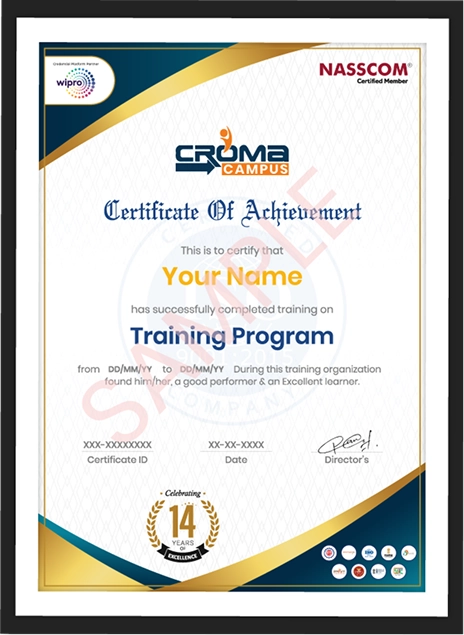Course Design By
Nasscom & Wipro
Students will learn how to use the.NET Framework 4.5 tools and technologies to create complex ASP.NET MVC applications.
The emphasis will be on coding practices that improve a web application's performance and scalability.
To show students when each should or could be utilised, ASP.NET MVC will be introduced and compared to WebForms.
This course will teach web developers how to divide the user interface, data access, and application logic on websites.
This course is for people who wish to learn how to construct advanced web apps and handle displayed HTML completely.
Organize IT departments and act as liaisons with other departments to recommend software and system improvements.
Across the organisation, provide IT support to internal personnel.
Reorganise new employee workstations.
Perform hands-on fixes at the desktop level, including software and configuration system and application installation and upgrades.
Processes and workflows connected to information technology should be documented.
Examine IT procedures and make suggestions for improvements.
we train you to get hired.

By registering here, I agree to Croma Campus Terms & Conditions and Privacy Policy
+ More Lessons
Course Design By

Nasscom & Wipro
Course Offered By

Croma Campus

Stories
success
inspiration


career upgrad


career upgrad


career upgrad


career upgrad
19-Jul-2025*
21-Jul-2025*
16-Jul-2025*
19-Jul-2025*
21-Jul-2025*
16-Jul-2025*

You will get certificate after
completion of program

You will get certificate after
completion of program

You will get certificate after
completion of program
in Collaboration with






Empowering Learning Through Real Experiences and Innovation

we train you to get hired.

Phone (For Voice Call):
+91-971 152 6942WhatsApp (For Call & Chat):
+91-971 152 6942Get a peek through the entire curriculum designed that ensures Placement Guidance
Course Design By


Course Offered By

Ready to streamline Your Process? Submit Your batch request today!

FOR QUERIES, FEEDBACK OR ASSISTANCE
Best of support with us
For Voice Call
+91-971 152 6942For Whatsapp Call & Chat
+91-9711526942